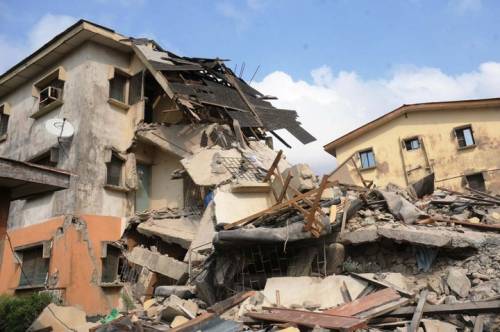Buildings are neither designed nor constructed to collapse. A fully or partially collapsed building is therefore – and naturally – a failure or a failed building.
Experience from scientific inquest into failed buildings always tends to reveal a deviation from the standard or acceptable practices/norms, which is predominantly precipitated by ignorance due to lack of appropriate experience or dereliction of professional duties.
Aside from the reprimand that may follow a failure, to show that it is an unacceptable occurrence, the need to take proactive steps to forestall future failures is even more compelling. This is because of the collateral damage that follows every other failure and the gradual erosion of trust in the abilities of practitioners in the built environment.
If the spectrum of buildings that have suffered failure was restricted to a particular type of user or clientele – private users and developers – it would have been easy to situate these failures with the compromise in standards – even if the culpability of regulators/regulations in the development of buildings would not be excused thereof. However, this spectrum cuts across both individual, organized private and public sector buildings, some of which are located even in our ivory towers and duly funded with public funds.
As the head of the building team, our involvement in issues of building collapse – to ascertain and ultimately work towards forestalling – is imperative. Whereas it may be generally accepted that buildings fail due to structural collapse, the structure of a building begins with the architectural configuration of the building.
The role of the Nigerian Building and Road Research Institute [NBRRI], a parastatal under the Federal Ministry of Science and Technology, with the mandate to conducting applied and integrated Research and Development into various aspects of the Nigerian Construction Industry, must also be highlighted and complemented by Professional Regulatory Bodies in the building and construction industry.
According to NBRRI, the institute has been investigating and researching into every building collapse in the country and preparing technical reports thereof, to use as a case-history in teaching and research. It is therefore very necessary for the Professional Regulatory Bodies to collaborate with NBRRI to ensure stricter enforcement and implementation of decisions arrived at in previous inquest, to avoid reoccurrence.
Professional Regulatory Bodies in the building and construction industry also need to ensure that her members are abreast with these findings, in other to increase awareness.
It is therefore our informed view that a holistic overview of the operations of the Nigerian Building and Construction Industry needs to be undertaken to ensure that checks are put in place to forestall further collapse of buildings and also to ensure appropriate reprimands where and if they happen.
Suffice it is to reiterate the importance of the ARCON Project Registration Number (APRN) and the urgent need for its full compliance and enforcement nationwide on all building development and construction projects in Nigeria.
The APRN is a mandatory registration number issued to all architects/architectural firms practicing in Nigeria for each of their projects, to certify that the projects are being executed by fully registered architects and are eligible to prepare, produce and submit architectural projects for building plan/implementation permits; as well as to receive such approvals when given.
It is intended to, amongst others, help in the combat against the scourge of building failure and collapse through the elimination of quackery. It provides daily update on APRN projects registration for the records and onward transmission to the Development Control authority. It also helps in keeping track of architects/architectural firms responsible for the design and supervision of their projects, as well as enables ease of compilation of statistical data on the Nigerian building industry, being an important ingredient for National planning and development.
Therefore, the workings of the monitoring, compliance and enforcement units of all the relevant Professional Regulatory Bodies and enabling regulations need to be re-jigged for effective and efficient performance. This will go a long way to reverse this negative trend in the industry and help to rebuild confidence in the public and end-users, of the competence and capacity of professionals.
Signed
Arc Noyor E. Omatsone FCArc, FNIA, Maarches – President
Arc. Dr. ‘Koye Jolaoso FCArc, FNIA, Maarches, MNIM, FCipdm, FIcan, iCIOB – National Secretary
